Brazil’s Bauru sandwich
The details of some of the sandwiches we cover on the Tribunal are highly fungible–for example, the Barbecue sandwich we covered last month offered a wide range of possibilities for us to pursue, some of which I mentioned in my post on the subject, others of which were ably handled by our other writers; similarly, a ham sandwich is a ham sandwich whether it also contains cheese, mustard, lettuce, tomato, or any number of other condiments or garnishes; and a burger is a burger, from the 1/2lb medium rare gastropub burger with an array of fancy toppings to the lowly fast food single.
Some of the sandwiches we are pursuing, however, are formalized by tradition or in some cases by law, and admit very little variability. In pursuing my post on Chile’s Barros Luco, I learned that the pebre sauce I’d added to the sandwich meant that it was no longer a Barros Luco. Technically, adding the avocado that I did to the Barros Jarpa likely invalidated it as well, though I feel like Chileans are a little less particular about that than the Luco. A hot dog is a hot dog, but when you say a Chicago-style dog, or a Coney, a certain set of expectations are generated. And don’t you dare put any ketchup on that.
I think the sandwiches we’re covering this month, on the whole, fall into that latter category. I’ve mentioned the Barros Luco already, and the Beef on Weck will get its own post, but the Bauru‘s form certainly seems set in stone. The sandwich is named after the Brazilian city Bauru, which takes the sandwich seriously enough that there is a certification program in place to ensure that sandwich-makers adhere to the standards set by the city. Variants have appeared, and a Google Image Search will show that the sandwich is not nearly as immune to cultural drift as I’m claiming, yet still, in large part, there is a homogeneity to those images that you don’t see when searching for just any sandwich.
The Bauru as I encountered it on the Wikipedia page, and on other sites I’ve found, is a hot sandwich of roast beef, tomatoes, pickles, and melted mozzarella cheese in a crusty baguette, batard, or similar sandwich roll that has had some of the crumb scooped out to allow the ingredients to be mounded up inside. Since I was covering two roast beef sandwiches this month, and since I’m a DIY weirdo when it comes to these things, I decided to roast my own beef for this post.
I’m fairly extravagant with my time when putting together a post for this blog, but I try not to be too extravagant with my money. I bought a fairly cheap 3lb roast, eye of round, with the idea that I’d roast it to a rare/medium rare finish then slice it thinly across the grain with a deli slicer. My neighbor Rich trained as a chef and has retained a bunch of nifty kitchen gadgets that I borrow from time to time, and has a nice big commercial-quality slicer. As much as people seem to prefer hand-sliced meats, when it comes to slicing a lean, tough roast thin enough to make it tender, I’ll take a slicer over my own meathooks any day.
I used this technique I found for “perfect” eye of round roast, rubbing it with a combination of garlic salt, white pepper, and onion powder, blasting the meat at high heat for 21 minutes, then leaving the oven on the Warm setting for an hour, after which a probe thermometer inserted into the roast read 126 degrees. While resting the meat, I deglazed the roasting pan with a combination of beef stock and bouillon and reduced it to make jus. I added additional juices that had accumulated during the rest period to the jus, then refrigerated both the roast and the jus for later use. The roast would slice better while cold, and I could reheat the slices in the jus when ready to make the sandwich.
Here’s what the roast beef looked like coming out of the slicer:
The meat was fairly lean, yes, its beefy flavor mild, but it was tender and it was going to work great in sandwiches.
I bought bolillo rolls from a local bakery I’d visited before to make these sandwiches. I heated the rolls in a 400° oven to enhance their crustiness, then sliced them open and scooped out a good amount of the crumb.
I reheated some roast beef in the jus and filled the bottom half of the bolillo roll with it.
I added some sliced tomatoes. Sprinkling the tomatoes with salt and oregano seems to be a common technique, besides just sounding damned tasty, so I followed suit.
Some sites I’ve read have you throw the whole thing together at this point and stick it in the oven until the cheese melts. But many of them call for melting the cheese in a double-boiler instead, and that’s the route I took. I used a roughly 50/50 mix of standard and fresh mozzarella.
The fresh starts to separate when melting, but by managing the temperature of the double boiler and by stirring carefully and frequently, you can get the melted cheese to reabsorb most of that moisture, for a more malleable, less springy/stretchy texture. Once I’d melted the cheese sufficiently, I used a fork to scoop it into the top half of the hollowed-out bolillo. For the pickles, I used large sandwich-sliced dills, easily found in any grocery store.
It’s a bit of an unwieldy beast, this sandwich. Removing the crumb from the bread causes the loaf to lose much of its rigidity. The mass of ingredients can easily overwhelm the resulting thin shell.
The flavor of the sandwich justifies the pride Brazilians take in it though. I’m not sure it’s a situation where the whole is greater than the sum of its parts–it’s pretty much what you’d expect a hot roast beef sandwich with pickles, salted/herbed tomato, and melted mozzarella in a crusty roll to taste like–but the sum of these parts is setting a pretty high bar to begin with.
The bauru is a fine sandwich, a worthy addition to the List, and I’m glad to have tried it. It’s a bit on the sloppy side, so if you make one for yourself, use a sturdier bread than I did, if you can. Reheating the beef in jus is not a necessary step, but it was a tasty one, and you don’t even have to roast the beef yourself if you don’t want to. Any time you use tomatoes, make sure you use the best ones you can find. That’s not easy outside of late summer, but there are still decent ones available, and the salt/oregano combination helps bring out their flavor and integrate them into the sandwich. It’s a big sandwich, and it probably wouldn’t hurt to wash it down with one of these either:
I hope you’ll try this sandwich, it’s a winner.

I like sandwiches.
I like a lot of other things too but sandwiches are pretty great


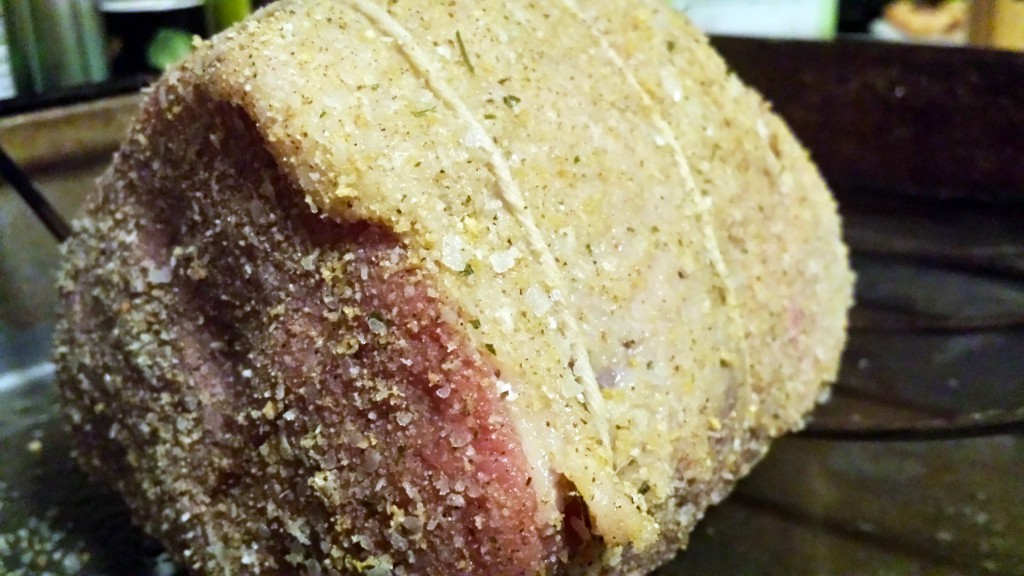
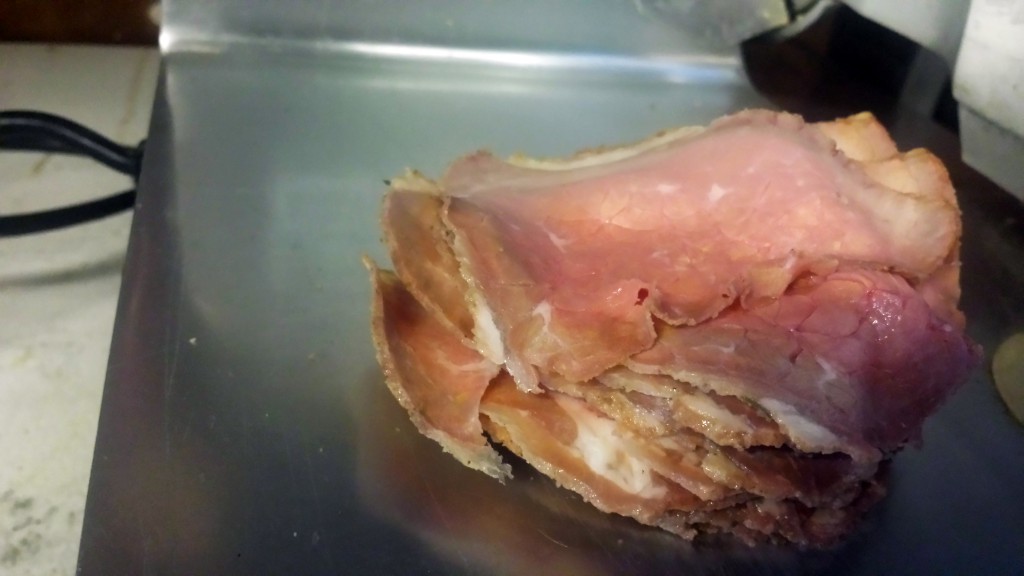
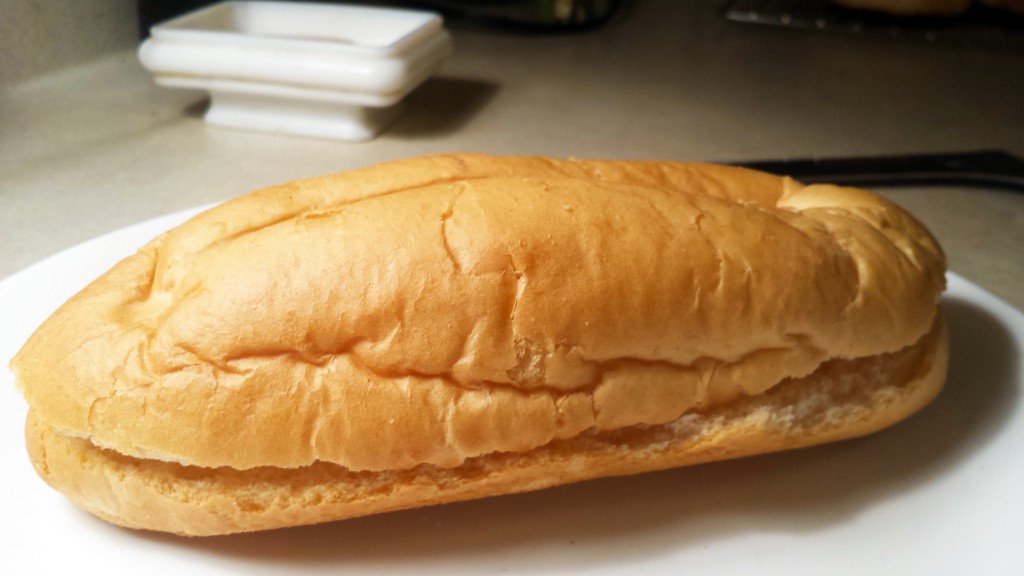
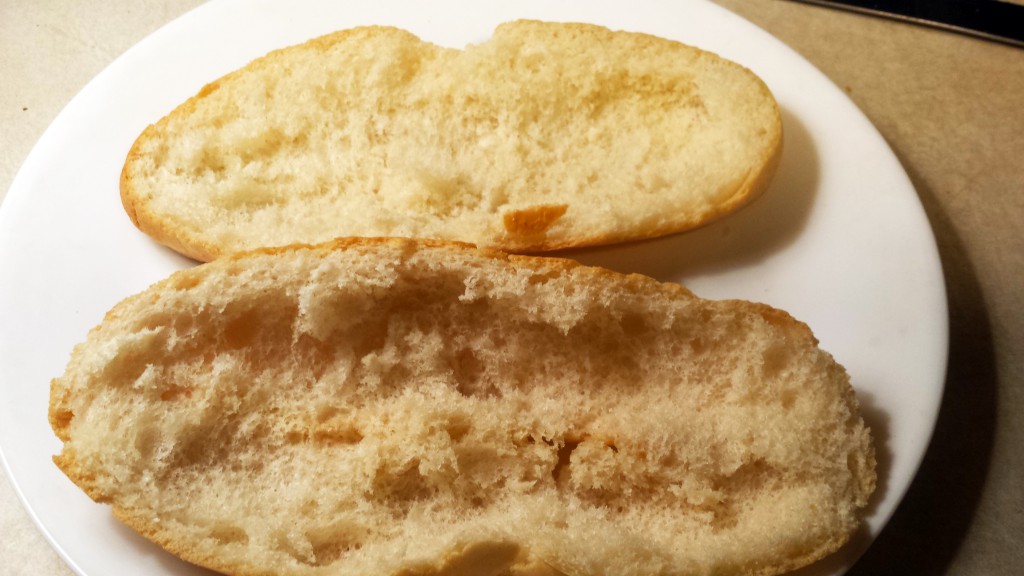
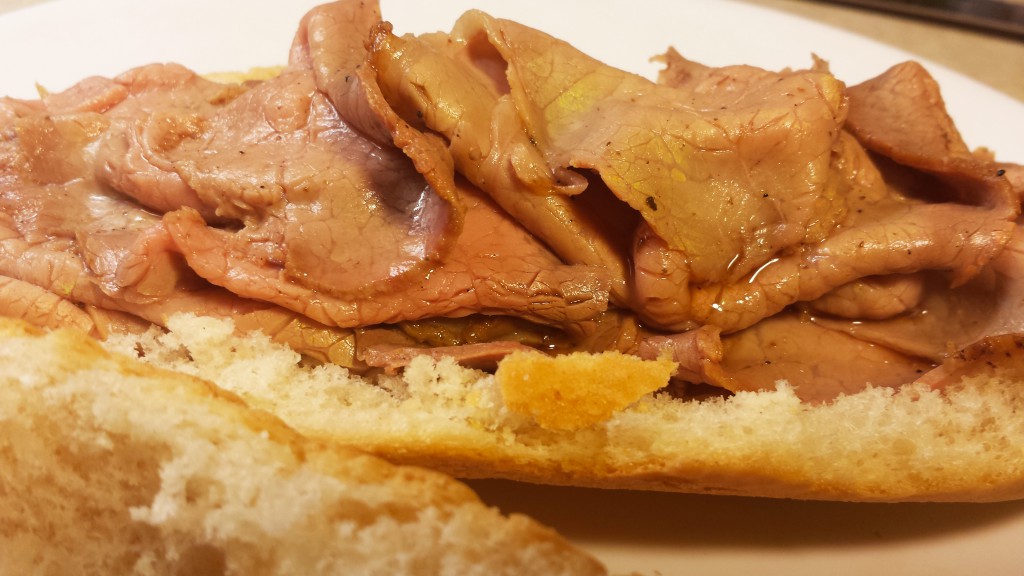
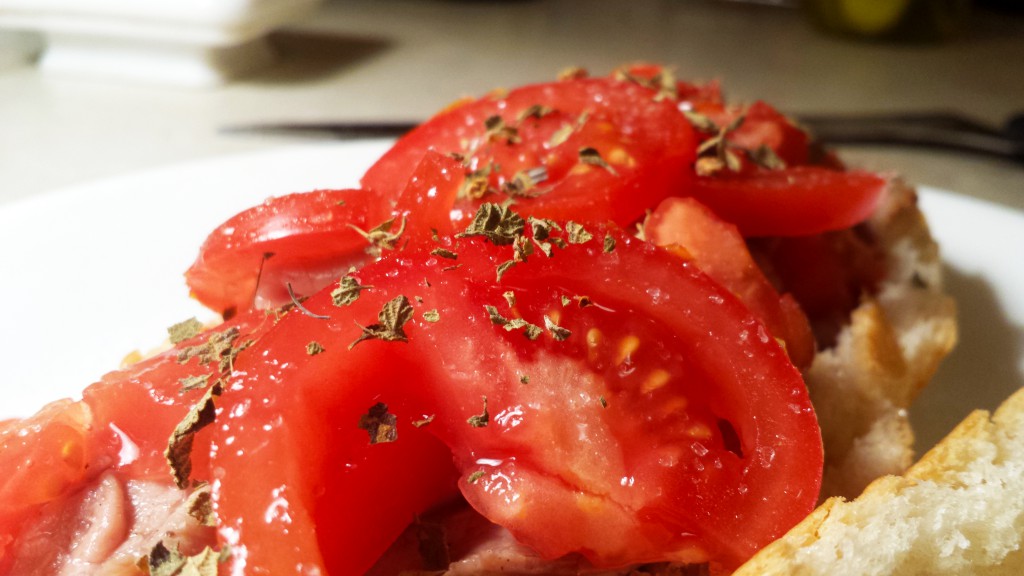
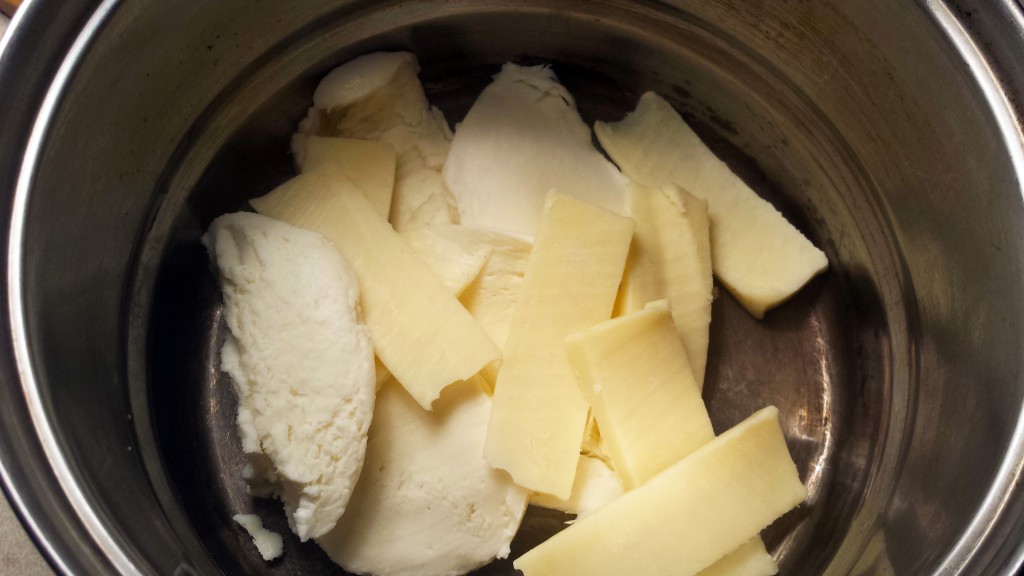
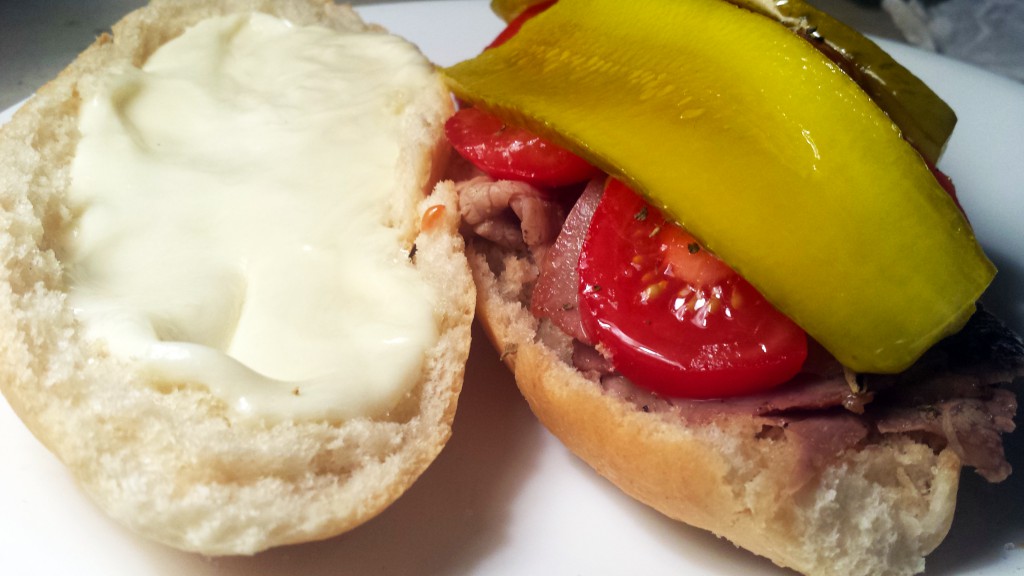
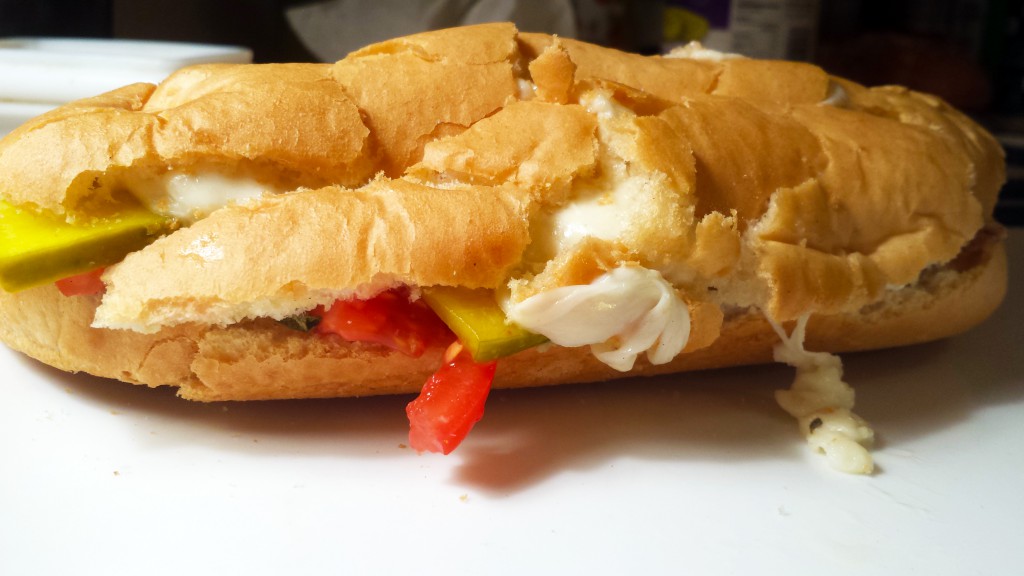
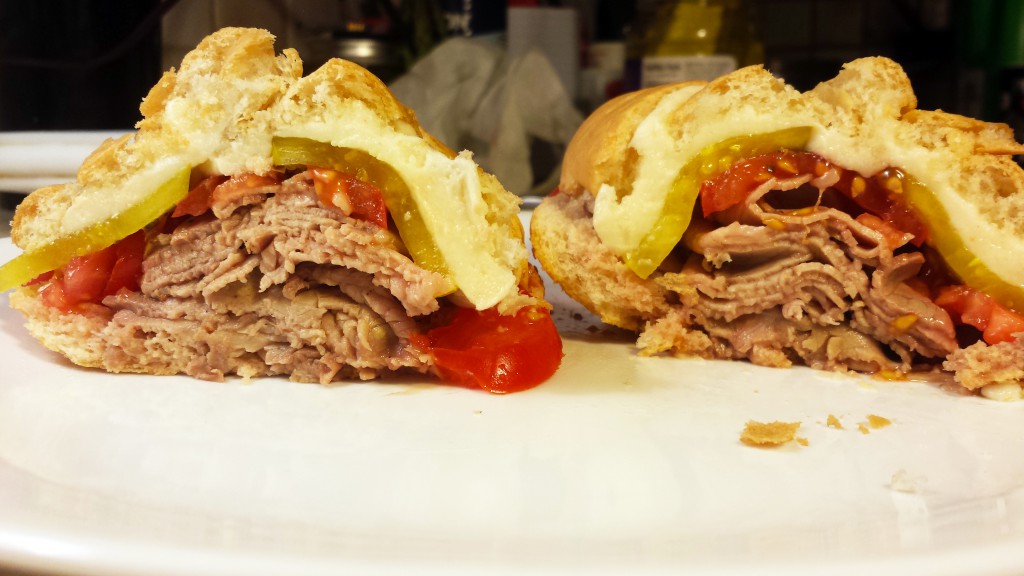
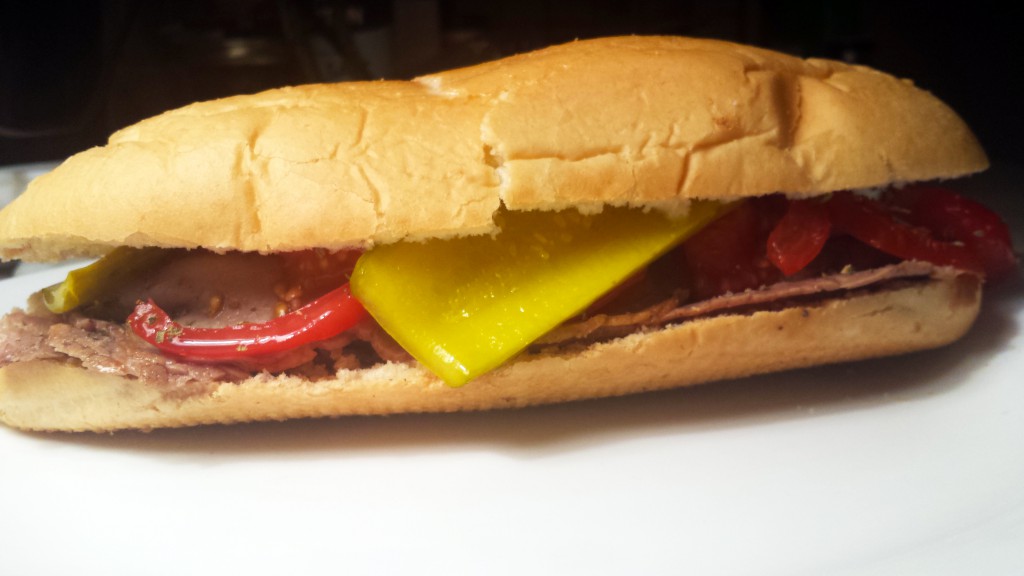

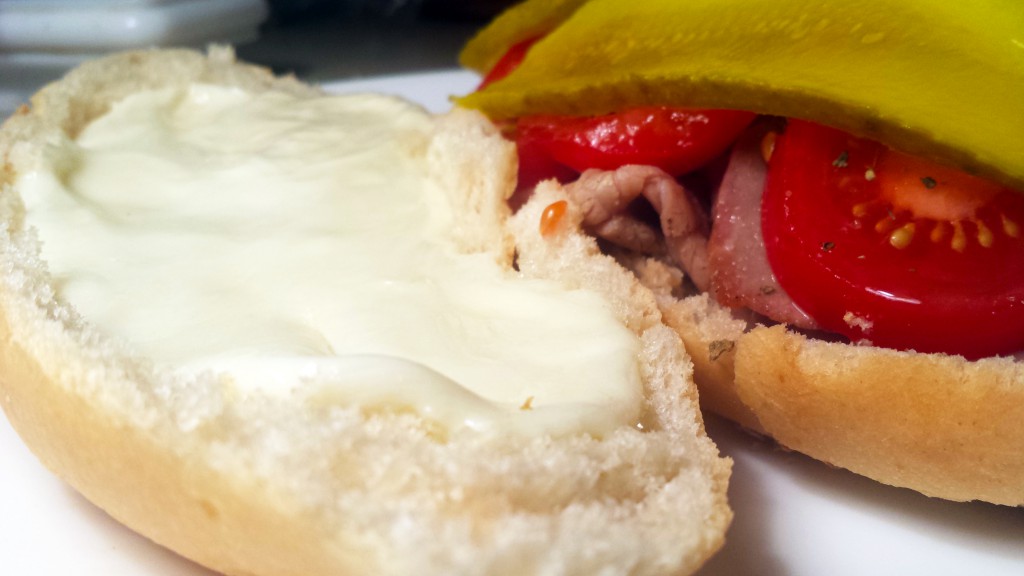



Looks and sounds delicious!
Your photo and its’ source have been featured on the World Food Guide website:
<http://worldfood.guide/dish/bauru/: >